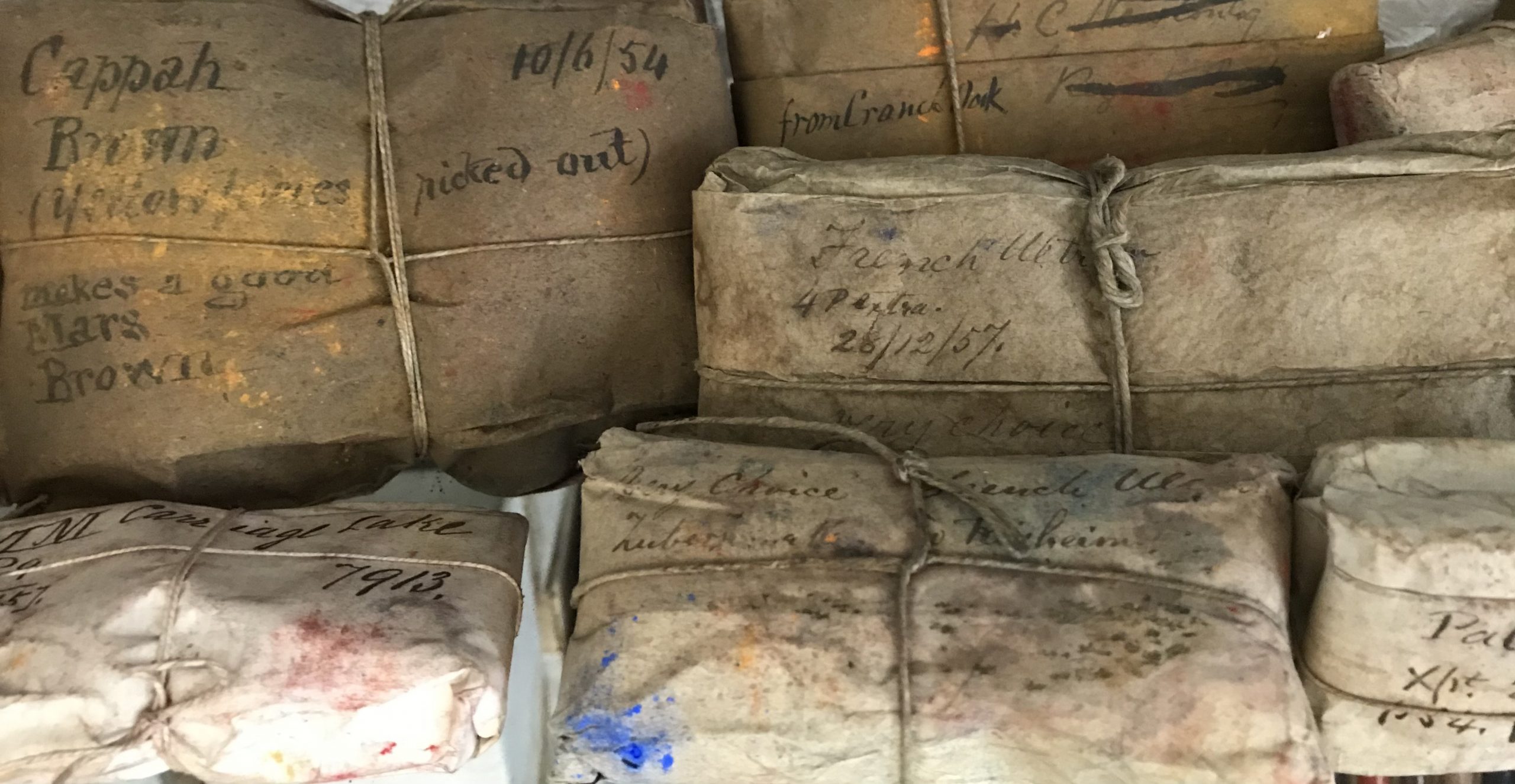Painting with Mud by Alastair Gordon

Some paints come from the most unusual of places.
One especially macabre pigment was Mummy Brown, sourced from the putrefied remains of human corpses. Equally dubious is Bone Black, originally produced from the charred remains of waste ivory.
British landscape painter William Turner was famous for his love of Indian Yellow, made from the urine of cows fed a diet of mango leaves. The urine combined with clay then ground down into a fine powder mixed with linseed oil before he smeared it across the canvas, often in generous proportions. The glory of the sunset rendered in all the ruddy stuff of clay and urine.
Way before painting appeared in galleries, temples and churches, humans made marks in the landscape, such as the caves at Lascaux in France. Their paint was sourced from the ground for these early humans; pigments most likely mixed with water and sloshed on the walls by hand or spat out from the mouth like rudimentary spray paint. In a sense, artists have always just painted with mud. In so much, that paint has often just been made from the materials of the earth. Earthy pigments such as yellow ochre quite literally come from the ground beneath our feet. A natural mineral consisting of clay and silica, yellow ochre gets its golden-brown colour from the iron oxyhydroxide mineral, goethite.
When put in its simplest form, paint is particles of pigment that give colour and texture mixed in with a binder that holds it all together. The pigment defines the colour of the paint and its character: whether it’s opaque or translucent, course or fine, lightfast or prone to shifting colour through time or exposed to light.
Traditional pigments such as Rose Madder, Sepia and Carmine Red all derive from organic matter such as plants, fish and beetles. Other pigments come from inorganic material such as rocks, metals and semi-precious stones such as lapis lazuli which gives that deep ocean of ultramarine blue. In the past, pigments would have been ground by hand into a fine powder and mashed into a binder such as a linseed oil or gum arabic to make oil or watercolour paint. More recent binders such as acrylic resins and polymers were developed from their more commercial usage in industrial paints.
Art historian, James Elkins, wrote, “To an artist, a picture is both a sum of ideas and a blurry memory of ‘pushing paint,’ breathing fumes, dripping oils and wiping brushes, smearing and diluting and mixing”. Painting is a messy business. The wood, stone, soil, urine, mud and ash mixed in with the oily resins and sticky fluids. Yet from all that mess, great things arise.

